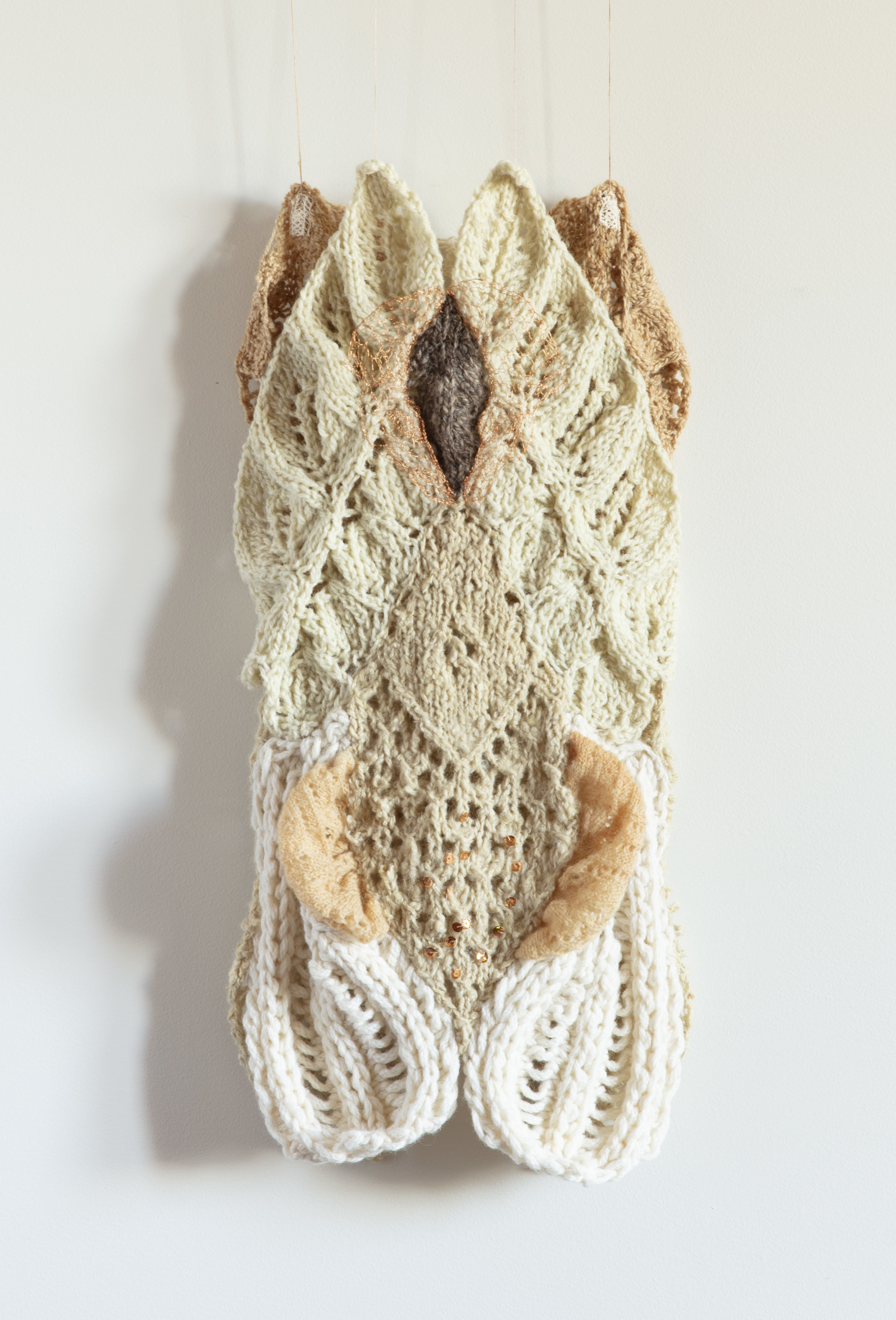
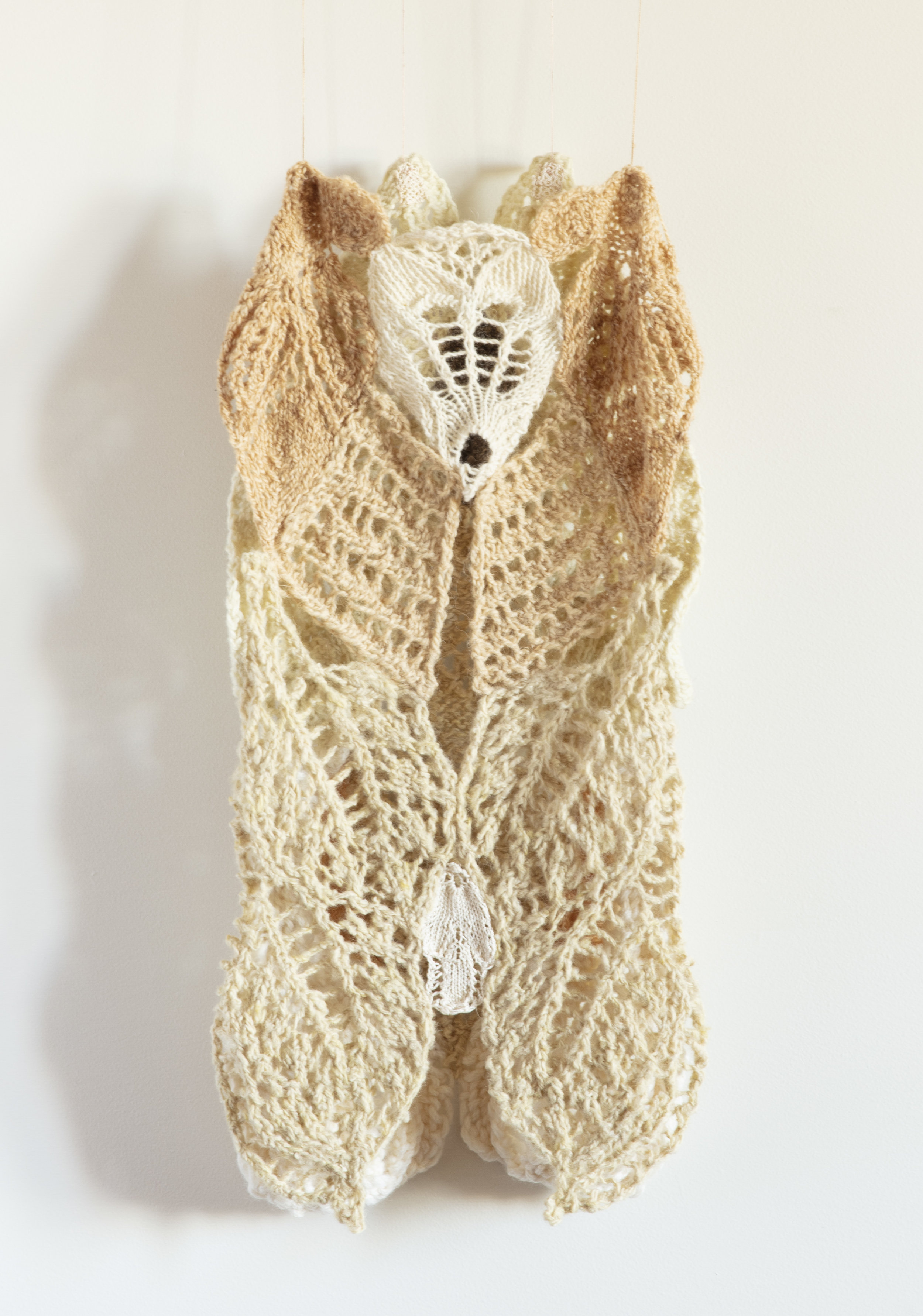
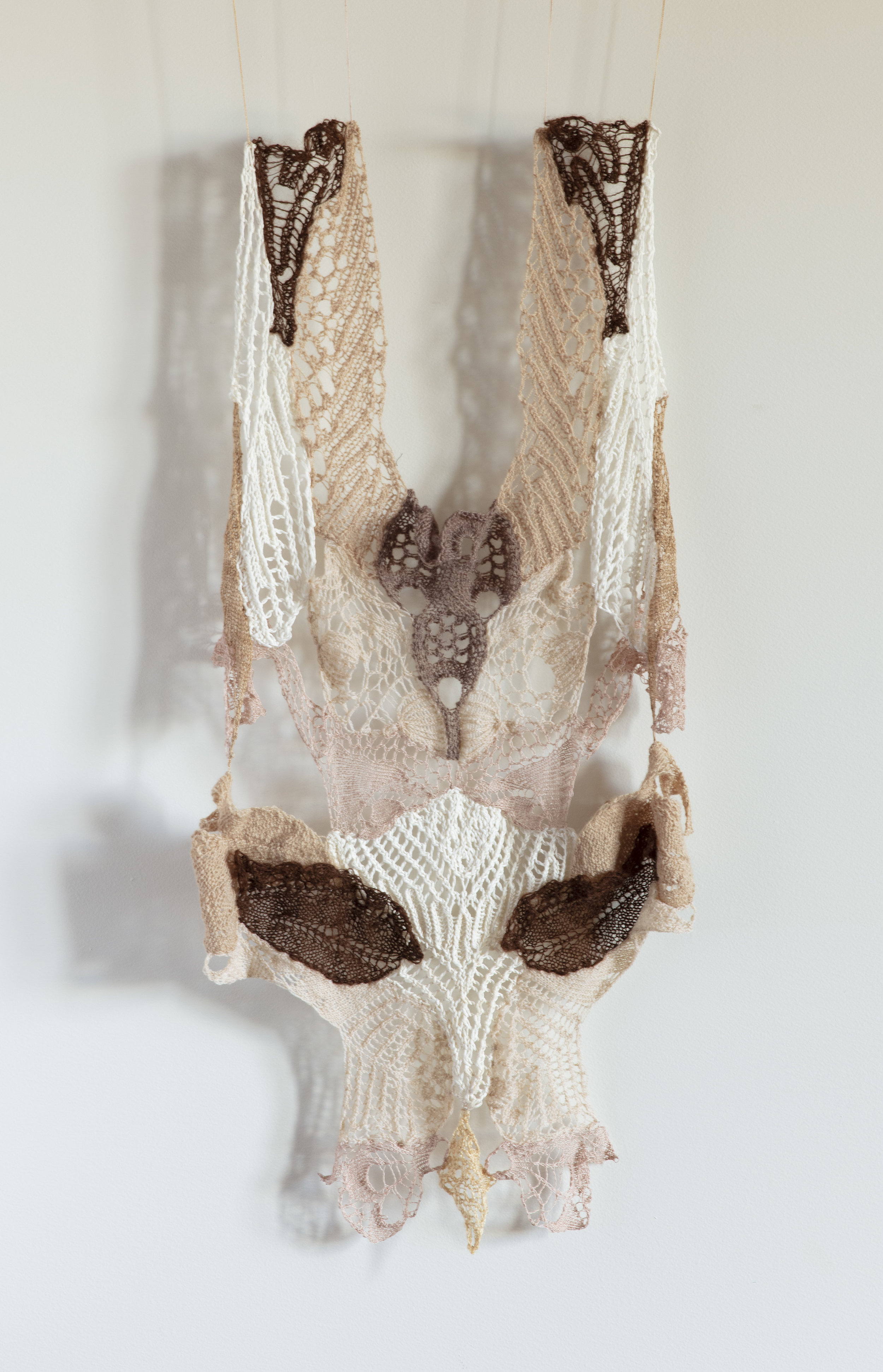


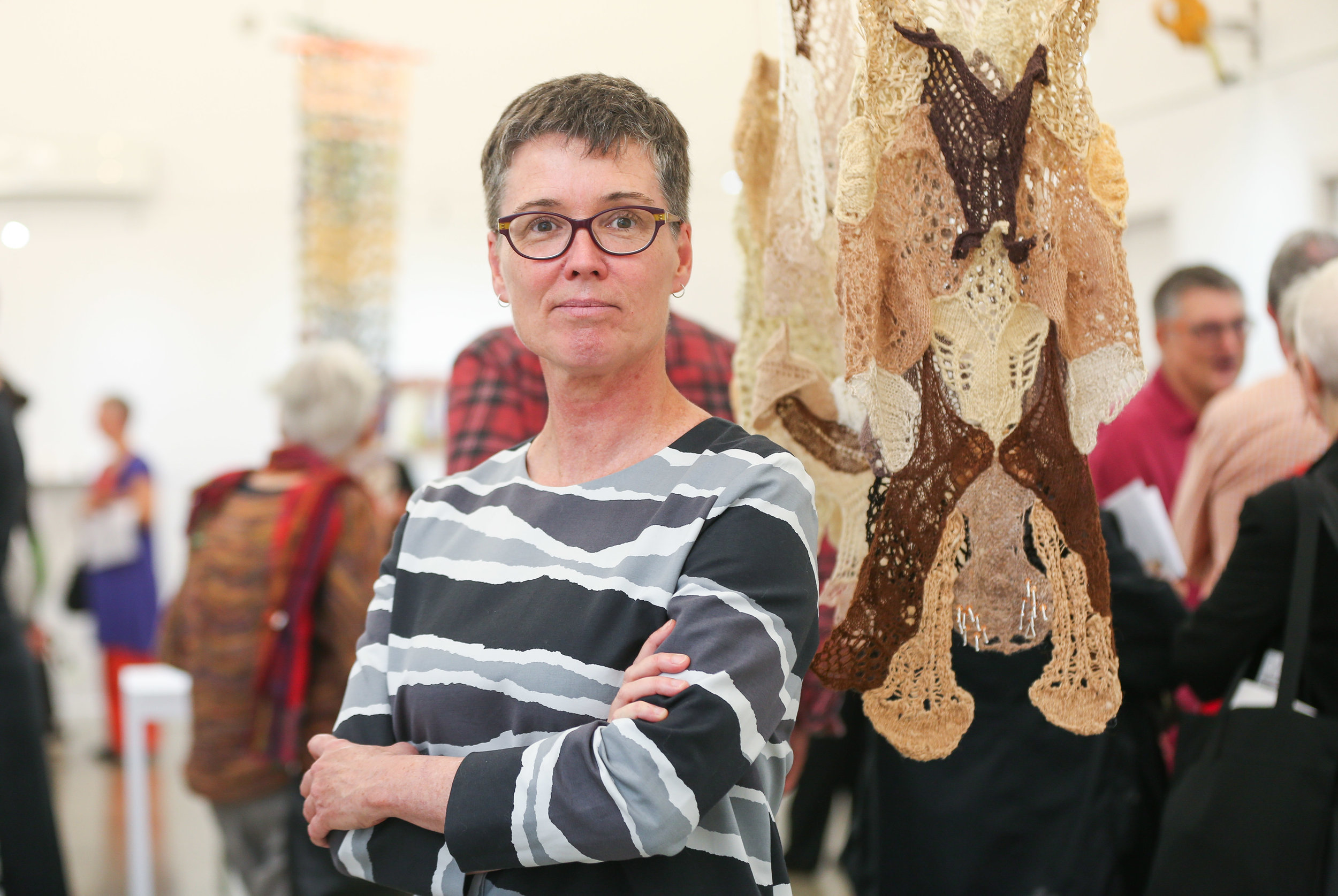
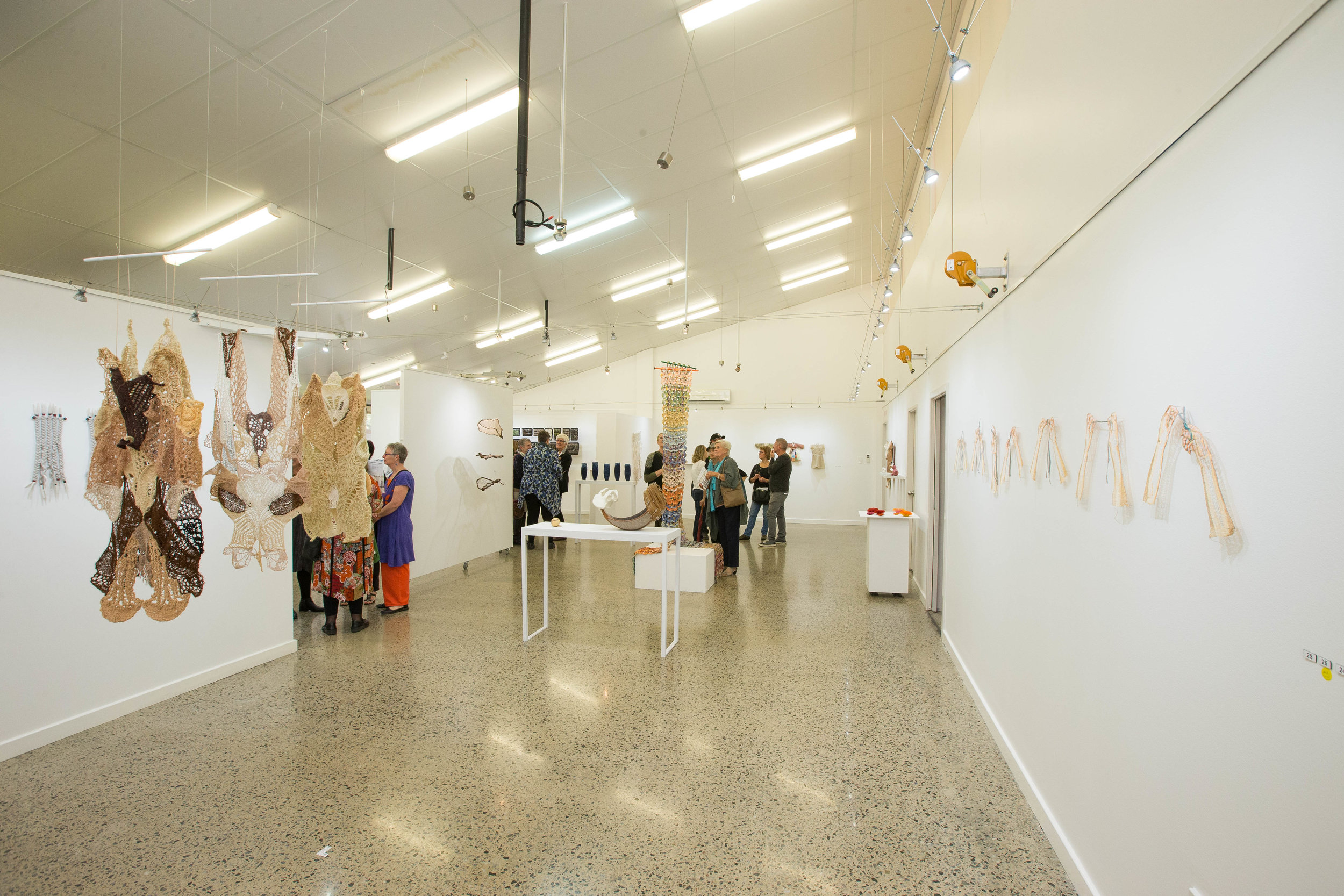
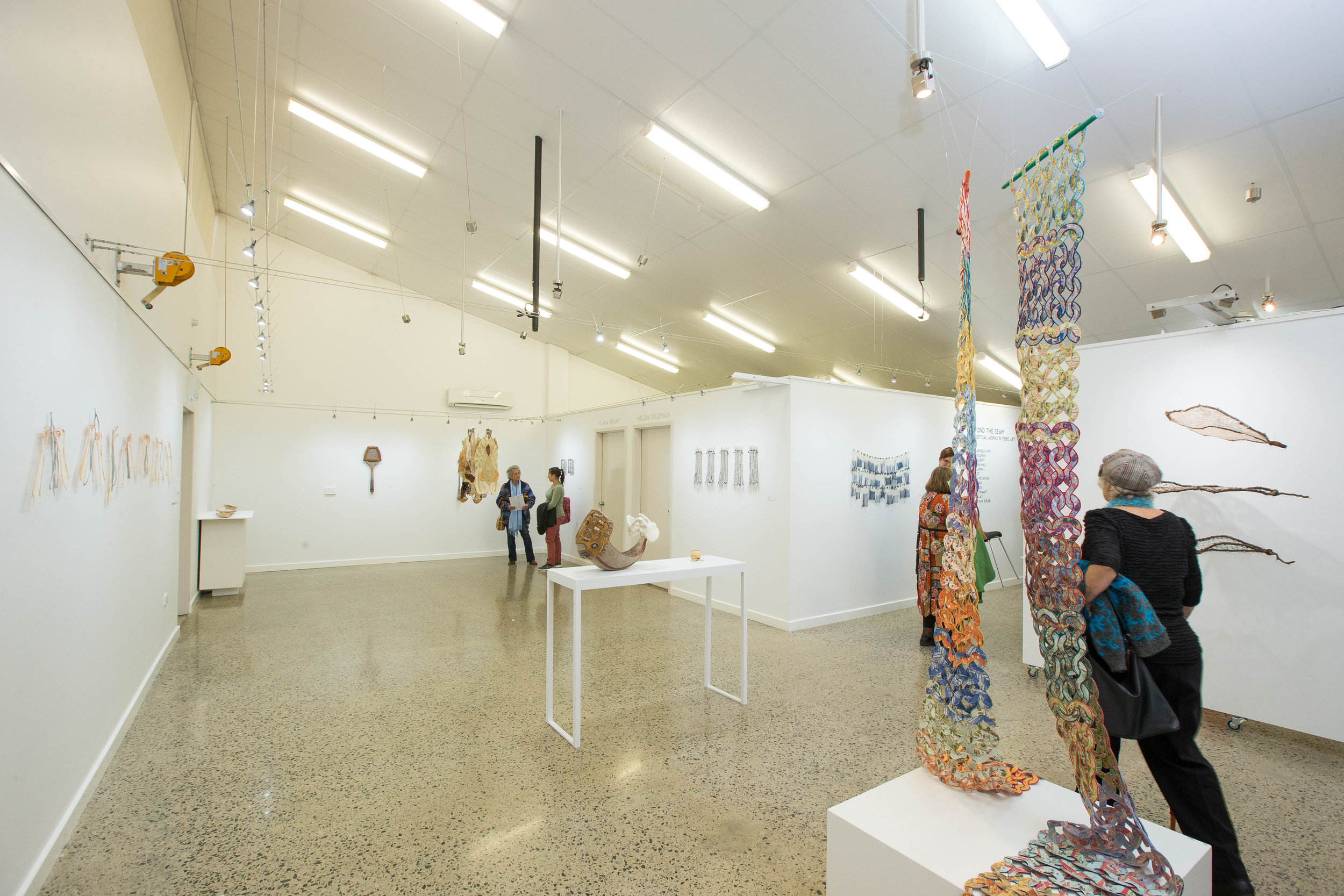
Catalogue Statement
In contrast to my recent work, which seeks to directly engage people through their active participation, this work is personal. What is the space that I inhabit as an ageing female body in a culture hyper-focused on appearance and consumable beauty, as a non-indigenous person not at home physically or spiritually in this land, as an overactive mind more often in the virtual than the real? Can I reconcile the work of trying to overturn injustice with the limits of my physical body and my ungovernable emotional life? Where is my spirit’s home if not here?
A life-long knitter, I often include ‘shards’ of knitted lace abstracted from patterns for lace tablecloths in my work. These lace patterns are rendered in charts of symbols which enable sub-sampling, mirror-imaging, repetition and other manipulations. The unique process of knitting allows organic and geometric shapes to grow and evolve into texture and pattern. Form and surface are made simultaneously. The tactile qualities of the threads interact with the lace patterns to enhance, obscure and elaborate their qualities. When these lace shapes are connected into a surface with bilateral symmetry, something body-like is evoked, as in scarred shed skins and masking cloaks of consolation.
May, 2018
Artist Talk
This work came about when I began to use my body to protest against Australia’s offshore detention of refugees. Carrying a placard transgresses unspoken rules of public conduct. My body feels exposed and vulnerable. Others make much greater sacrifices. When Omid Masoumali sacrificed his body by setting himself on fire on Nauru in 2016 he violently enacted the cruelty Australia inflicts on the bodies and spirit of refugees. Five days ago, another refugee sacrificed his own body to escape Australia’s torture. Yesterday Behrouz Boochani wrote:
“It’s pouring rain. As usual, the sky tries to wring every single cloud and squeeze out every single drop. A rainy day … right after a day full of nightmares.
A rainy day … to cleanse, to wash away the sorrow, to eliminate the grief, to stop the inhumanity, to end the viciousness and barbarity. A rainy day … after another death on Manus.
Salim died on Tuesday morning. He committed suicide. He was riding the bus that takes the refugees to town. He got up off his seat, he opened the door, and he jumped out. And moments later the wheels of the vehicle ran over his head. He was left there crushed on the concrete.
Another suicide, another extreme set of circumstances. The third death by suicide on Manus in under a year, the seventh death of a refugee on Manus in total. …
Salim would at times fall to the ground and begin to tremble. His mouth would foam and he would yell. All the refugees were familiar with his situation. All the staff working in Manus prison, the medical personnel, everyone in the immigration department including the immigration minister, human rights organisations, and the journalists reporting about Manus, they all knew about Salim.
…
Everyone could see what he was going through. And maybe this was why immigration officials were determined to keep him there, to help reinforce the ruthlessness and brutality of the system.
…
Salim was a Rohingya who fled genocide. He crossed a treacherous ocean, endured five years of illness in a prison on a forlorn island, and in the end he lost his life in the most tragic way. He was a father and a husband. He had three children: eleven, eight and five years old. He had never seen his youngest because the child was born while he was on his way to Australia.
The deaths on Manus must be understood in the context of the various interlocking processes that occur here: the never-ending queues under the burning sun just to receive food; the hierarchies constructed to divide people in the prison; the rationalisation and control of every decision and action; the humiliation prisoners experience, and the contempt of the staff and authorities; the denial of rights and respect; the demeaning of human life; chains of events leading to death; death via a mechanical process; death as a commodity, for political profit.
For years Salim was like a possessed corpse who would die a number of deaths every day … He would be reborn every morning without any recollection and without resuming anything from his life in the past. He would just walk over to the medical centre in the hope of being healed. Death by a thousand blows; death endured over and over again; death of the body, death of the soul; … death that has the lowest value possible.
The rain washes away the blood spill, it cleanses the anguish.
The killers and the victims, the scene of the crime …
the rain carries them all away.
…
These words are a form of lament in honour of a man who always had a few flowers tucked into his hair.”
…
This was part of the article written by Behrouz Boochani in Friday’s Guardian newspaper.
Australia’s policy, supported by both major political parties, is based on the suffering of men, women and children who, in their dire need for safety, asked Australia for help. We answered them with five years of physical, mental and spiritual anguish and no end in sight.
I have transgressed another rule of public conduct today. You may feel some sensations in your bodies because of what I have said. Please act on them.
27 May, 2018